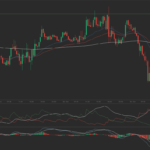 Both West Texas Intermediate and Brent crude benchmarks extended last weeks drop after Iraq followed Saudi Arabia and Iran into cutting its list prices to Asia to the lowest since January 2009. Speculators slashed their net-long positions on WTI by the most in five weeks. Better-than-expected trade data from China lent some support to oil prices, albeit having an overall muted effect.
Both West Texas Intermediate and Brent crude benchmarks extended last weeks drop after Iraq followed Saudi Arabia and Iran into cutting its list prices to Asia to the lowest since January 2009. Speculators slashed their net-long positions on WTI by the most in five weeks. Better-than-expected trade data from China lent some support to oil prices, albeit having an overall muted effect.
On the New York Mercantile Exchange, US November crude traded at $84.42 per barrel at 7:30 GMT, down 1.63% on the day, having shifted in a daily range between $85.63 and $84.25 a barrel. The contract touched $83.59 on Friday, the lowest since July 2012, and settled the week 4.4% lower.
On the ICE, Brent for delivery in the same month fell to $87.74 earlier in the session, the lowest since December 2010, and stood at $88.52 a barrel at 7:30 GMT, down 1.87% on the day. The European crude benchmark settled at $90.05 on October 9th, the lowest since July 2012, and closed the week 1.2% lower at $90.21 on Friday, its third straight weekly decline. Prices are down almost 20% this year. Brent traded at a premium of $4.10 to its US counterpart, down from Fridays settlement at $4.39.
Oil prices received some support on Monday after data by Chinas customs administration showed the Asian nations exports rose in September at the fastest pace since February 2013, buoyed by imports for processing and re-exports of goods such as the iPhone 6. Analysts had projected an annualized export growth of 11.8%, compared to the preceding months 9.4% jump.
Imports rose by 7.0%, the most since February, defying projections for a 2.7% contraction and compared to a 2.4% decline a month earlier. Chinese crude imports alone surged 9.5% from August. As a result, the countrys trade surplus narrowed to $31 billion from last months $49.83 billion, exceeding expectations for a drop to $41 billion.
Zheng Yuesheng, a spokesman for the customs agency, said that the iPhone 6 has “positive impacts on processing trade”. The Zhengzhou customs department, where the iPhone factory is located, reported that 6.22 million units of the two new iPhone models were shipped out by September 21st.
OPEC output, prices
OPEC output surged by 402 000 barrels per day to 30.47 million bpd in September, the group said in its monthly report on October 10th. Its top producer, Saudi Arabia, pumped 9.074 million barrels per day, up from 9.597 million in August. The Energy Information Administration reported on Wednesday that US crude production surged to a 28-year high of 8.875 million barrels per day in the week ended October 3rd, while preliminary data by Russias energy ministry showed that Russian output rose to 10.61 million bpd in September, including crude and condensates, which was only 0.3% below a post-Soviet record set in January.
Members of the Organization of the Petroleum Exporting Countries will convene in Vienna on November 27th to decide on the groups crude quotas, with market players broadly expecting a reduction in output.
However, such an agreement might come elusive as major producers have already signaled their reluctance to lose market share and instead responded to the bear market by cutting delivery prices to Asia.
Iraq, OPECs second-biggest producer, followed the example of Saudi Arabia and Iran and will sell its Basrah Light crude to Asia at the biggest discount since January 2009. This comes after the state-run National Iranian Oil Co. cut its prices for Asian customers last week, while a week earlier Saudi Arabia trimmed the cost of its Arab Light crude for Asia to the lowest since December 2008. The series of price cuts to Asia fueled speculations of a possible price war between the groups members.
According to CNBC, Saudi Arabia has privately told oil market participants it could be comfortable with $80 for oil. Meanwhile, Ali al-Omair, Kuwaits oil minister, said on Sunday that $76-$77 will probably be a strong area of support because that was the cost of production in the US and Russia.
Gordon Kwan, head of oil and gas research at Nomura said for CNBC: “Judging by the latest comments from Kuwait and Saudi Arabia, we expect more near-term downside ahead for oil prices amidst the ongoing global growth scare.”
Meanwhile, data by the U.S. Commodity Futures Trading Commission showed that hedge funds and other large speculators cut their bets on rising WTI prices by the most in five weeks, pressuring down the market further. In the week ended October 7th, money managers reduced their net-long positions by 4.8% to 192 208 futures and options combined. Short positions jumped by 8%, the most in a month.
Daily pivot points
According to Binary Tribune’s daily analysis, West Texas Intermediate November futures’ central pivot point is at $85.23. In case the contract breaches the first resistance level at $86.88, it may test $87.93. Should the second key resistance be broken, the US benchmark may attempt to advance to $89.58.
If the contract manages to breach the first key support at $84.18, it might continue to drop and test $82.53. With this second key support broken, movement to the downside could continue to $81.48.
Meanwhile, November Brent’s central pivot point is projected at $89.60. The contract will see its first resistance level at $91.10. If breached, it may rise and test $91.98. In case the second key resistance is broken, the European crude benchmark may attempt to advance to $93.48.
If Brent manages to penetrate the first key support at $88.72, it could continue down to test $87.22. With the second support broken, downside movement may extend to $86.34 per barrel.





